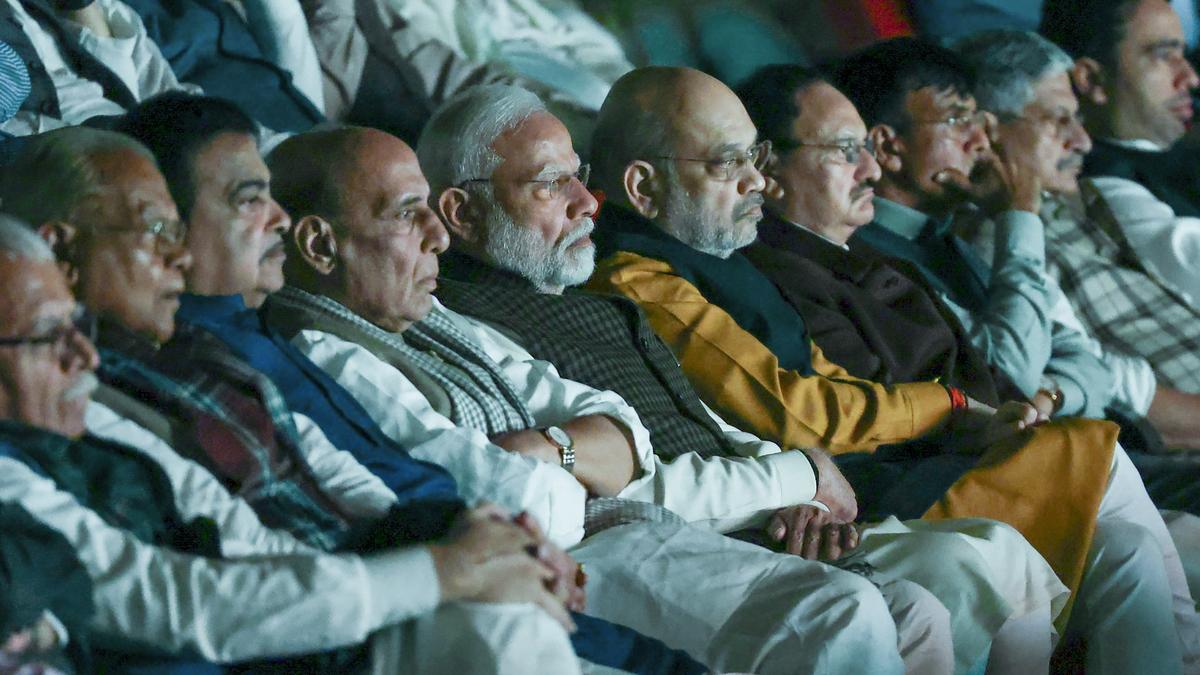
How does BJP elect its party president? Premium
The Hindu
BJP's leadership structure from local to national level, highlighting the process of electing a new party president.
The story so far: For the past year, J.P Nadda, the incumbent president of the Bharatiya Janata Party (BJP), has been on an extended tenure as the party sought to maintain stable leadership during a Lok Sabha election year. With its most recent membership drive crossing the 100 million-mark, the BJP is currently holding polls for its State party units. Following this, a new party President will be elected, as per tradition — unanimously and with the approval of the Rashtriya Swayamsevak Sangh (RSS).
Since its inception, the BJP has always chosen its president after a ‘co-ordination’ meeting with the RSS where a suitable candidate who has majority support on both sides is selected. However, during the Lok Sabha campaign, Mr. Nadda’s assertion that the BJP was ‘capable to run on its own’ had ruffled the feathers of the RSS top brass, and RSS largely stayed away from the poll campaign. The poll result, which saw BJP form a coalition government at the Centre, forced it to re-enlist the RSS’ help for State elections.
A five-hour meeting was held in August 2024 at Defence Minister Rajnath Singh’s residence with Mr. Nadda, Home Minister Amit Shah, RSS second-in-command Dattatreya Hosabele and its joint general secretary Arun Kumar in attendance. The RSS would prefer someone with strong organisational skills, while the BJP prefers someone who ensures seamless coordination between the high command and the president’s office, reported The Hindu.
Mandal & District level
During its membership drive, BJP enrolls ‘active’ members who are tasked with bringing in at least 50 persons as party members in a booth or an assembly seat. Only active members can take part in the party’s organisational elections. An ‘active’ member can take part in elections to BJP’s mandal committees and above – district, regional, State and central committees. All these committees have a three-year term.
The primary unit of the BJP is its local committee, which comprises of up to 300 members. A member who has been part of the BJP for at least a year can be elected as president of a local committee along with a stipulated number of committee members depending on the strength of the local committee.
Many such local committees together constitute a mandal – whose committee members are elected by the president of these local committees. There are three types of mandal committees based on categorisation of the States according to the number of Lok Sabha seats they have - (a) three or less Lok Sabha seats; (b) four to twenty Lok Sabha seats; and (c) more than 20 Lok Sabha seats. These committees have an elected president and up to 60 elected members, as decided by the State executive. The mandal president has the power to nominate four vice-presidents, two general secretaries, one treasurer and not more than five secretaries. There are reserved quotas for women and Scheduled Caste/Tribe (SC/ST) members in these mandal committees.

“Earth Day celebrations have already started in Bengaluru, with campaigns at various colleges such as St. Josephs, and Christ University where life-size elephants made from the invasive species, Lantana Camera, have been travelling to spread the message of conservation and coexistence, along with expert talks from WWF India and Ravi Chellam of Metastring Foundation,” said the release.

Vijayawada and Vizag metro rails: Centre approves appointment of SYSTRA MVA Consulting for preparing mobility plans. The New Delhi-based consultant has emerged as the successful bidder for preparing CMPs for both the projects. The Government of Andhra Pradesh has sanctioned DPRs for construction of the Visakhapatnam Metro Rail for a length of 46.23 km in three corridors at an estimated cost of ₹11,498 crore and the Vijayawada Metro Rail for a length of 38.40 km in two corridors at a cost of ₹11,009 crore.











